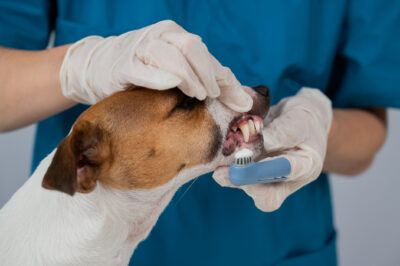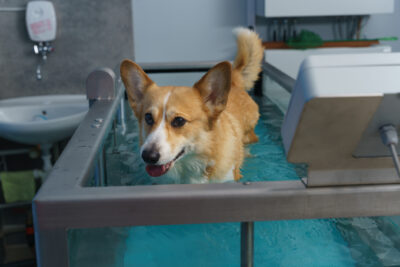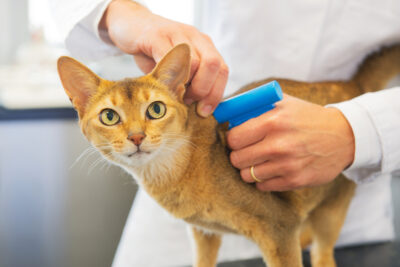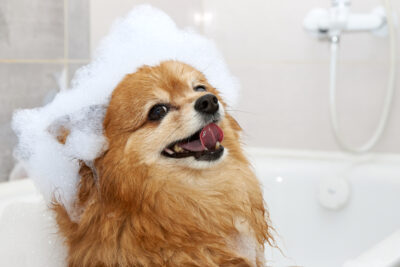How to Get Rid of Your Dog’s Bad Breath

Overview
- Bad breath in dogs—also called halitosis—can have many causes.
- The most common cause is periodontal disease from bad oral hygiene.
- Certain diseases can also cause bad breath in dogs.
- A dental cleaning, where dogs are put under anethesia, is the best treatment option.
- Brushing teeth at home and providing dental treats can help prevent bad breath.
Nothing disrupts a cuddle with your favorite pup like a face full of hot, stinky dog breath.
But, not all bad breath is created equal. Sometimes, bad breath in dogs is caused by your dog raiding the kitchen trash can or getting into your cat’s litter box (ewww). If that’s the case, bad breath should pass. Other times, though, your dog’s bad breath could be the sign of a serious illness.
Let’s explore the causes of bad breath in dogs, discuss options for getting rid of it at home, and when it’s best to give your veterinarian a call.
Causes of Bad Breath In Dogs
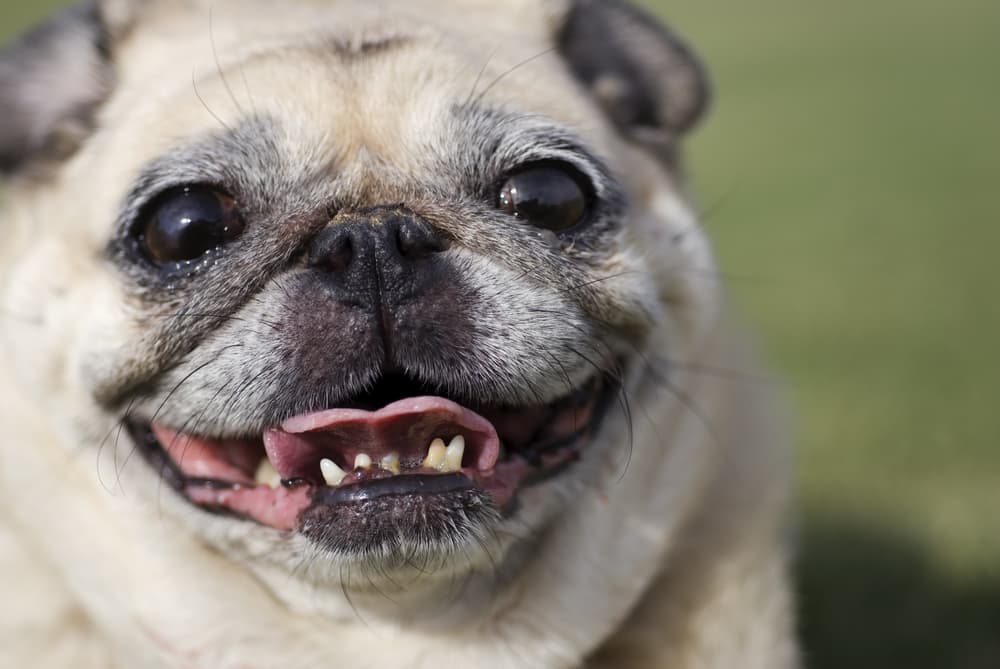
Bad breath—also called halitosis—in dogs can have many causes. Poor oral hygiene, nutrition, and underlying health issues can all impact breath, according to Dr. Sarah Wallace, a veterinarian based near Washington, D.C.
Wallace notes that the best-case scenario for a dog’s breath is that it doesn’t smell like anything. “It may briefly smell like what they just ate, especially if it’s something like garbage,” she says. “But healthy mouths just smell like nothing.”
If your dog’s breath does smell bad, chances are that he has periodontal disease caused by poor oral hygiene. According to the American Veterinary Dental College, periodontal disease is “the destruction of bone, gum tissue, and structures that hold the teeth in place.” “This is overwhelmingly the main cause of bad breath in dogs,” Wallace says.
Periodontal disease often starts out as gingivitis, which is the inflammation of the gums. As gingivitis progresses into periodontal disease, bad bacteria start to accumulate in your dog’s mouth, which causes foul smells.
“If periodontal disease is the root cause, that means that the bacteria living in your dog’s mouth have gotten under the gums around the teeth and are eating away the connection between the two,” says Wallace. “As those bacteria go through their metabolic cycle, they give off sulfur. It’s their waste, and that’s what’s causing the bad breath smell.”
She adds that untreated periodontal disease in dogs can cause loose and broken teeth and dental pain.
While any dog can develop oral disease, small-jawed and flat-faced (brachycephalic) dog breeds are more likely to suffer from mouth-related ailments because their teeth are closer together. Wallace notes that these types of dogs are also more prone to tooth and jaw abnormalities. “Flat-faced dogs often have skeletal deformities,” she says. “Technically speaking, a (purposefully bred) skeletal deformity is why their faces are flat, and it creates tooth arrangements that aren’t conducive to good oral health.”
Small breeds in general often suffer from an increased incidence of periodontitis. Big dogs are affected too—though Greyhounds appear to have above-average chances of getting periodontitis.
While bad breath in dogs can be caused by periodontal disease or a dog simply eating garbage or poop, bad breath may also be a symptom of certain diseases.
Wallace says that vets can use your dog’s breath to raise suspicion of certain diseases. “If a dog has an intestinal obstruction—maybe from eating a sock or a toy that then gets stuck in the intestines—it’s very common for that dog’s breath to smell like a sewer,” she describes. “If a dog’s breath has sort of a sweet, fruity smell, it could mean that he has diabetes.”
If bad breath comes with other symptoms, such as low energy, vomiting, a lack of appetite, or obvious jaw pain (your dog jerks away or starts chattering his teeth if you touch his mouth), Wallace says it’s time to visit the veterinarian.
How to Treat Bad Breath in Dogs

Different causes of bad breath require different treatments. An intestinal blockage may require surgery to remove the foreign object. Diabetes requires a specialized diet and potentially an insulin regimen. Kidney disease needs careful dietary management. Once the problem is treated, the bad breath should clear up or minimize.
If your dog has been cleared of an underlying health condition, though, most bad breath in dogs is treated with a thorough dental cleaning. This is a very common procedure in veterinary offices due to the prevalence of periodontal disease in dogs.
Wallace explains that dogs need to be anesthetized for oral exams and dental treatment, so the veterinarian can take X-rays and do a thorough cleaning.
“We need to be able to see what is going on under the gums, and the only way to do that is with an X-ray,” she says. “If you can’t see below the gum line, you’re only getting half the story. The outside can look perfect, but there may still be severe oral disease below the gums.”
Once a dog is under anesthesia, a veterinarian is also able to do a thorough dental cleaning, getting rid of the bacteria that causes decay and bad breath.
Wallace also notes that she has noticed anesthesia-free dental cleaning being offered at groomers and clinics, but does not recommend them to her patients. “They can get tartar off your dog’s teeth, which makes the teeth look clean, but that’s not where the problem is and that’s not where the bad breath is coming from.”
Home Remedies for Dogs with Bad Breath
Wallace says that the best defense against dog halitosis is a toothbrush.
“Getting your dog used to daily tooth brushing is invaluable when it comes to preventing periodontal disease,” she says. “It works exactly the same way for dogs as it does for people—you’re removing plaque and stimulating the gums. This prevents the build up of bacteria and strengthens the dog’s oral health so that his immune system can fight off bacteria.”
Tooth brushing should start when your dog is a puppy so that he can get used to it as a part of his daily routine. You should use a canine toothbrush, as they’re stronger and less likely to break if accidentally chewed. You’ll also need canine toothpaste. It’s gravy or chicken flavored, to make it more fun, and doesn’t contain fluoride. You should never use human toothpastes on dogs, as the high fluoride levels can be toxic to animals. Only use a toothpaste specifically made for pets.
If your dog isn’t amenable to a toothbrush, Wallace suggests trying cheesecloth or even just your finger. “Dog toothpaste tastes good, so they shouldn’t fight you too much, and even just getting the enzymes from the toothpaste onto your dog’s teeth can help.”
Wallace also recommends dental treats, which helps keep the surface of teeth clean and stimulates the gums. “They aren’t quite on the level of a toothbrush, but they work well and help fight bacteria,” she notes. They can carry a lot of calories, though, so shouldn’t be used in pets that are obese, and the diet needs to be adjusted to account for the additional calories.
There are also anti-plaque water additives and food additives, though Wallace cautions that many of them don’t work as advertised. “If you want to try a water additive, look for one that is approved by the Veterinary Oral Health Council,” she says. Specialized diets, also listed on the VOHC website, can be used, and are especially useful for dogs that resist brushing.
How to Prevent Bad Breath in Dogs

Depending on the cause, preventing bad breath in your dog may be as easy as getting a locking trash can lid or keeping him out of the area where you keep your cat’s litter box.
If the bad breath is caused by periodontal disease, your best bet is to combat its progression with a combination of daily tooth brushing, dental treats, and annual dental checkups and cleanings.
Many preventatives (brushing, water additives, treats, etc.) are best used when starting with a clean slate. If your pet has recently had or is planning on having an anesthetized oral exam and teeth cleaning, consider using these products immediately after to prevent the start of dental disease.
“Don’t put anything off. Start maintaining oral health when they’re puppies and make dental X-rays a part of your annual checkup,” says Wallace. “Tooth brushing and dental treats should help prevent dental disease, not be your main course of treatment.”
She admits that X-rays can be expensive, running between $700 and $1,200, but stresses that staying ahead of dental issues will cost less in the long run.
“Bad breath may be the least of your problems,” says Wallace. “Tooth removal—if the dental disease progresses enough—can cost up to $100 a tooth, and your dog will be in horrible pain until that tooth is removed.”

